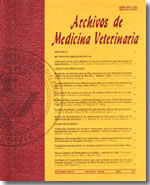Economic impact of DFD beef in a Federal Inspection Type (TIF) slaughterhouse
Main Article Content
Abstract
The aim of the study was to determine the effect that the presence of DFD (dark, firm and dry) in the carcass has on its economic value, based on the relation between the inadequated handling of bovines during the pre-slaughter period and the quality of the carcass. The study was conducted during september of 2009 in a federal inspection type slaughterhouse located in Mexicali, Mexico, using a sample of 352 carcasses. Color and pH measurements were used to grade the meat and to estimate the frequency of the problem which in this case was 47.63%. Individual and aggregated loss of value was calculated considering a population of 8,467 animals. The individual carcass value reduction was 85.58 dollars while the loss for the 8,467 slaughtered cows during September was estimated to be between 273,229 and 338,804 dollars. The reduction of the carcass value was considered to be important enough to promote the use of measures that improve the way that the animals are handled during the pre-slaughter period.

